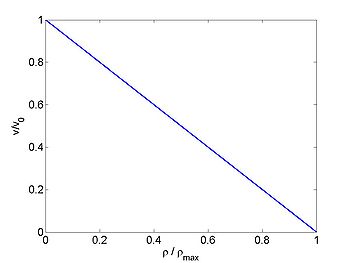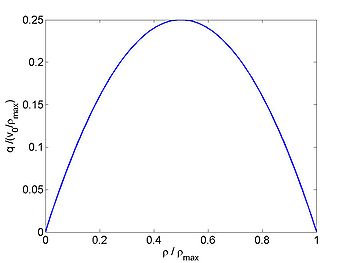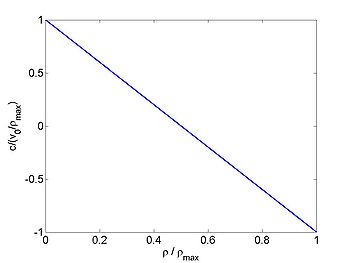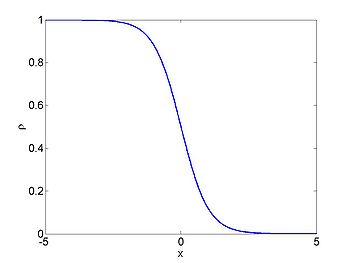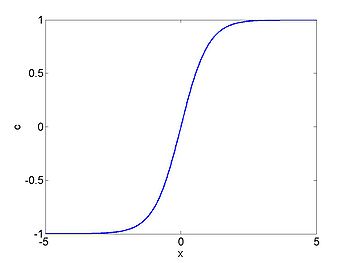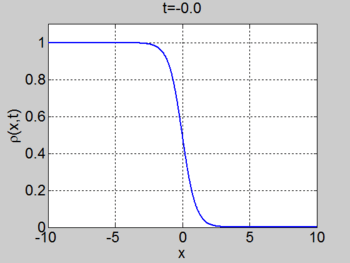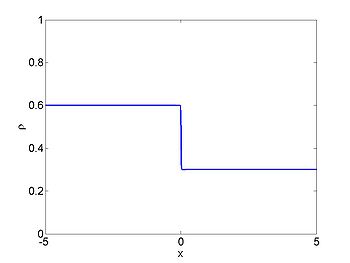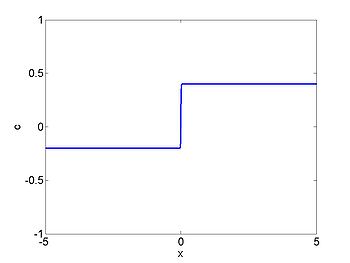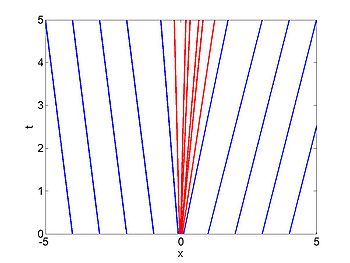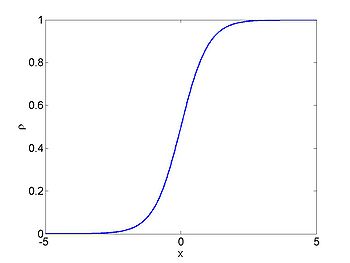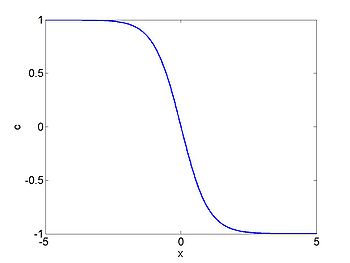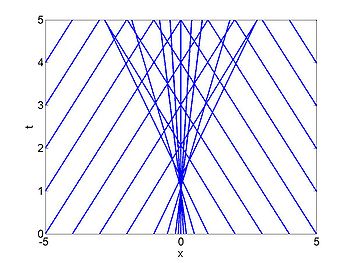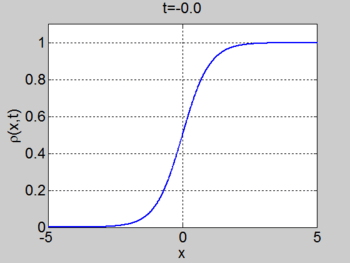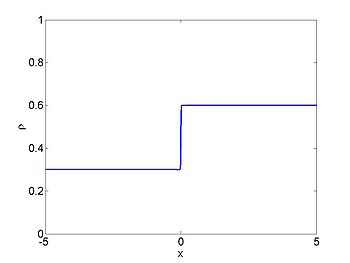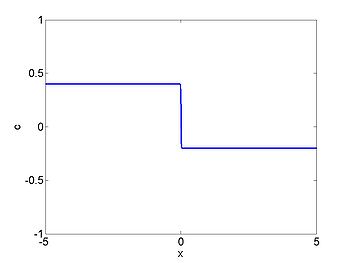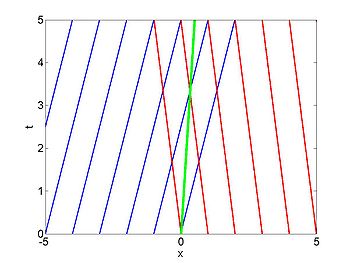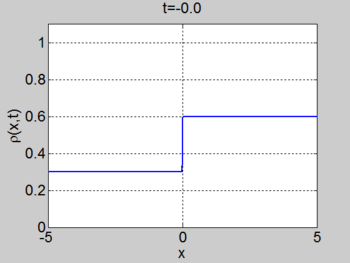Traffic Waves
| Nonlinear PDE's Course | |
|---|---|
| Current Topic | Traffic Waves |
| Next Topic | Nonlinear Shallow Water Waves |
| Previous Topic | Method of Characteristics for Linear Equations |
We consider here some simple equations which model traffic flow. This problem is discussed in Billingham and King 2000.
Equations
We consider a single lane of road, and we measure distance along the road with
the variable
If we consider a finite length of road
We now consider continuous densities (which is obviously an approximation) and
set
and if we take the limit as
Note that this equation has been derived purely from the need to conserve cars (it is a conservation equation) and
is not possible to solve this equation until we have derived a connection between
Equation for
At the moment we assume that we have some expression for
which gives us
or
where
A simple relationship between
The relationship between
- When the density
- When the density is
- The speed is a linear function of
This also gives good fit with measured data. We will either consider the general case or use this simple relationship. Using this we obtain
The flux of cars is given by
and the wave speed is
Small Amplitude Disturbances
We can linearise the model by assuming that the variation in density is small so that we can write
where we assume that
where the main difference between this and the full equation is that the wave speed
Under these assumptions the solution to the equation is
where
We now consider the characteristic curves which are curves along which the density
which are just straight lines of constant slope. We will see shortly that the full (nonlinear) equations also possess characteristics.
Nonlinear Initial Value Problem
We wish to solve
subject to the initial conditions
It turns out that the concept of characteristic curves is very important for this problem.
If we want
Comparing this to the governing partial differential equation we can see that we require
This means that the characteristics are straight lines (since
This does not allow us to write down a solution to the initial value problem, all we can do is write
which allows us to calculate the solution stepping forward in time, but not to determine the solution given
a value of
The characteristics are a family of straight lines which will all have different slopes. If two characteristics
meet, our solution method will break down because there will be two values of the density
Case when no shocks are formed
The characteristic curves will fill the space without meeting provided that the wave speed
and
so that
No shock example
We consider the case when
| characteristics | |
|---|---|
Riemann problem and the expansion fan
We can consider a simple problem in which there is a jump in the initial density
where
We can then see that we have lines of uniformly varying slope for
If we assume that
then we know that on the lines of the expansion fan (which all start at
The solution is then given by
This solution is known as an expansion fan.
We consider the case when
. The figures below show the initial density, the initial speed,
the characteristics and
| characteristics | |
|---|---|
Shocks
So far we have only considered the case when
We can easily see that the first characteristics to meet will be neighbouring characteristics. Consider two characteristics with
Then these curves will meet at time
which implies that
Note the following
- If
- The shock first forms at the minimum positive value of
Shock Fitting
If we calculate the solution using our formula
then we find that the solution becomes multivalued in the case when a shock forms. We then have to fit a shock. One way to do this is by imposing the condition that equal areas are removed and added when we chose the position of the shock. This corresponds to the condition that the number of cars must be conserved
Speed of the shock
If we consider the case when there is a shock at
and hence
If we now take the limit as
so that
Shock example
We consider the case when
| characteristics | |
|---|---|
Riemann problem
We now consider the Riemann problem
where
We consider the case when
The figures below show the initial density, the initial speed,
the characteristics, and
| characteristics | |
|---|---|
